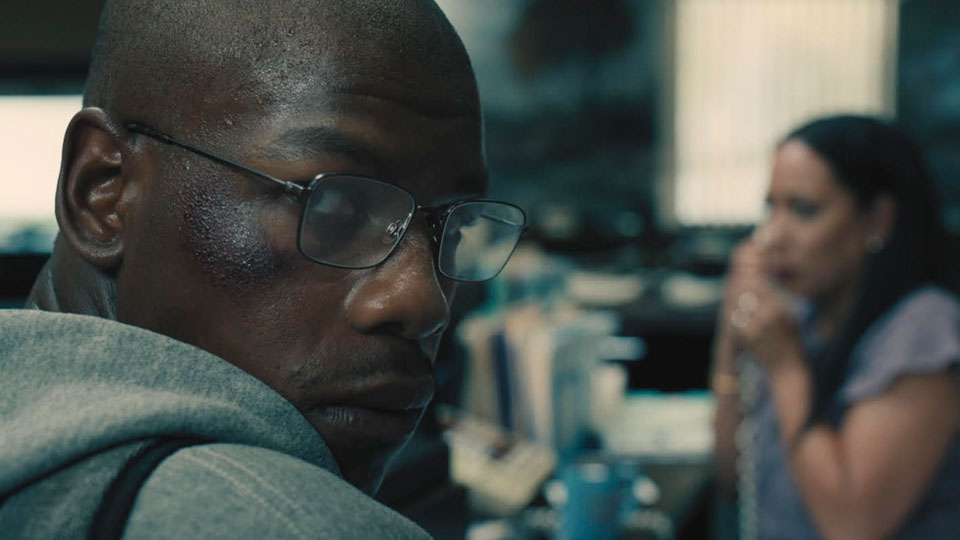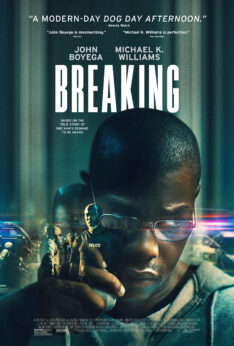
The new film Breaking starring John Boyega is a far cry from his days of playing Finn in the Star Wars movies. There’s nothing Disney-fied about this gripping film that puts on full display the systemic hardships veterans face once they’ve been discarded after fighting U.S. imperialism’s wars.
It is a film that is intense and focused from start to finish, tightly packaged for a powerful storytelling punch that will no doubt emotionally resonate with everyone who sees it. Many viewers will get angry watching this film, and perhaps even more infuriated knowing that it is closely based on a true and tragic story.
Breaking, directed by Abi Damaris Corbin, who co-wrote the screenplay with Kwame Kwei-Armah, puts to film the true story of Marine veteran Brian Brown-Easley. In 2017, Easley, who had been denied his regular disability check from the Department of Veteran Affairs (VA), walked into a Wells Fargo bank threatening to blow himself up if his VA money was not given to him. He took the bank and several employees hostage, having been pushed to his mental breaking point. The money he was fighting for, that he felt was owed to him, was only a little over $800.
Some may remember the news reports about Easley in 2017. I admit that with the years of political turmoil and one sensational news story after another since 2016, I went into the film not remembering more than a headline or two about the incident. I definitely didn’t know all the details of Easley’s life and his battle with being treated unfairly by the VA. If nothing else, I’m happy to say the movie puts on the map a story that should have received way more attention than it did when it happened.
At twenty minutes shy of two hours running time, Breaking does well to give us simple straightforward storytelling. The majority of the movie takes place in the space of the bank, but that doesn’t limit where director Corbin takes us in understanding how Boyega’s Easley came to find himself taking Wells Fargo hostage. We get a day in the life of Easley in a way where, even with the sparse dialogue, much is said visually. A lot of themes intersect in the film, including racism, classism, and the stigma of mental health, that could have easily overcrowded the plot. Corbin avoids this misstep and gives space for all these layers to be touched upon in an integral way, as opposed to feeling like a diversion from the main storyline.
The director also makes every moment count; even when doors open and close there’s a sense of urgency and danger. Viewers won’t be allowed to relax; an atmosphere is created that leaves us feeling the pressure just like all the main characters do.
Of course, none of this would be possible to convey without a powerful cast. In those quiet instances where scenes are characters simply speaking to one another, each cast member does a good job bringing out the variety of emotions needed. Nicole Beharie and the late, great Michael Kenneth Williams shine bright as supporting characters. And at the center of it all is John Boyega, who is the heart of the movie, with a gripping and heartbreaking performance that many will be talking about long after the credits roll.
 The film allows Easley to be a fleshed-out character for whom no quick news bite could do justice. He is a man down on his luck, trying to provide for his young daughter while battling his mental health issues. The support system he was promised from the VA after serving his time as a Marine is nowhere to be found. He’s not completely healthy, but his cause is a righteous one.
The film allows Easley to be a fleshed-out character for whom no quick news bite could do justice. He is a man down on his luck, trying to provide for his young daughter while battling his mental health issues. The support system he was promised from the VA after serving his time as a Marine is nowhere to be found. He’s not completely healthy, but his cause is a righteous one.
His is not a one-dimensional origin story of someone who was once “stable” and just “snapped” one day. There’s more to it all, and Boyega helps us to see that. It sounds cliché, but his performance will truly make you laugh and cry. There may be comparisons to other movies with semi-similar plots (John Q starring Denzel Washington comes to mind) but those would be short-sighted surface comparisons at best. Boyega’s performance stands out on its own, and so does the structure and execution of Breaking.
The one legitimate comparison could be that just as the fictional story of John Q touched upon the real problems of the for-profit United States health care system, Breaking brings further light to the very present problems of the VA and the overall treatment of veterans.
Established in 1930, the Department of Veteran Affairs is the executive branch department charged with providing life-long health care services to eligible military veterans. This includes medical centers and outpatient clinics located throughout the country. The department also includes non-healthcare benefits, such as disability compensation, vocational rehabilitation, education assistance, home loans, and life insurance. Despite these obligations, the department has had a long list of problems and controversies over the years.
There have been accusations of mishandled funds and inadequate care. A 2015 review found that of the nearly 850,000 veterans awaiting enrollment for benefits, over 200,000 died before the agency could grant them their health care. This has been attributed to the enormous backlog of neglected benefit claims the VA has. Those problems are just a sampling of the issues the VA has to address. It is clear that Easley’s story, of a veteran dealing with mental health issues and a lack of aid, was not an anomaly but an all too real reality for many in this country.
Since World War II, the United States government has engaged in more than 20 wars, creating hundreds of thousands of veterans. Often, it is working-class men and women who enlist due to the promises of better opportunities and benefits after they serve. Yet, what many of them receive are years of health issues and a lack of coverage.
Statistics reveal that 45% of homeless veterans suffer from mental health issues. For every 1,000 veterans, eight are homeless. According to VeteranAddiction.org, African-Americans make up one-third of veterans who are homeless.
Just as capitalism uses and exploits workers on the job by paying wages lower than the value they create, it does the same to working-class veterans after it has used up their bodies for imperial conquests. Workers are seen by the system as either wage slaves or cannon fodder.
Breaking aims to put much of this on the table, and you won’t have a feel-good time watching it. The performances are wonderful, the direction is inspired, but it is not easy-going viewing. I believe that’s the point, but viewers should be prepared. It’s a story that needs to be told. It’s a story that is still happening, and hopefully, more people will pay attention to it after watching the film. Breaking is entertaining in that it is great cinema, but you will be emotionally ravished.
Breaking will be released in theaters nationwide on Aug. 26, 2022.









